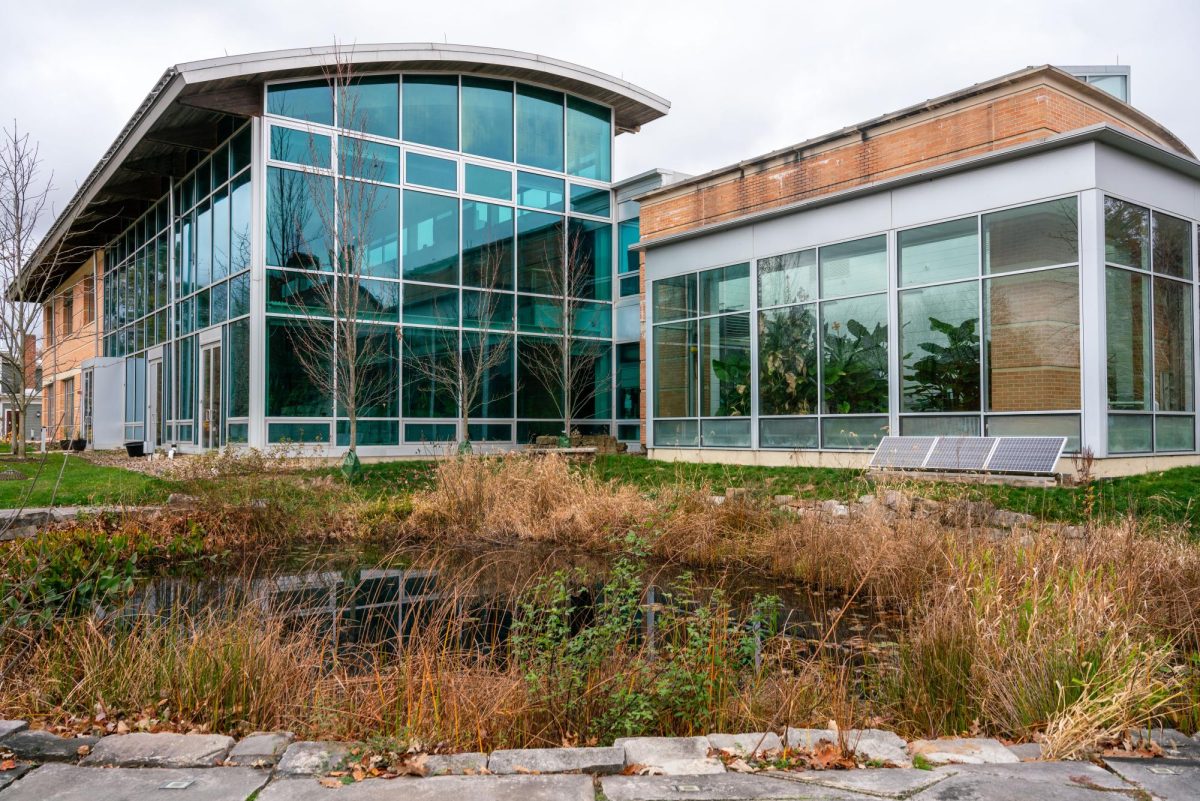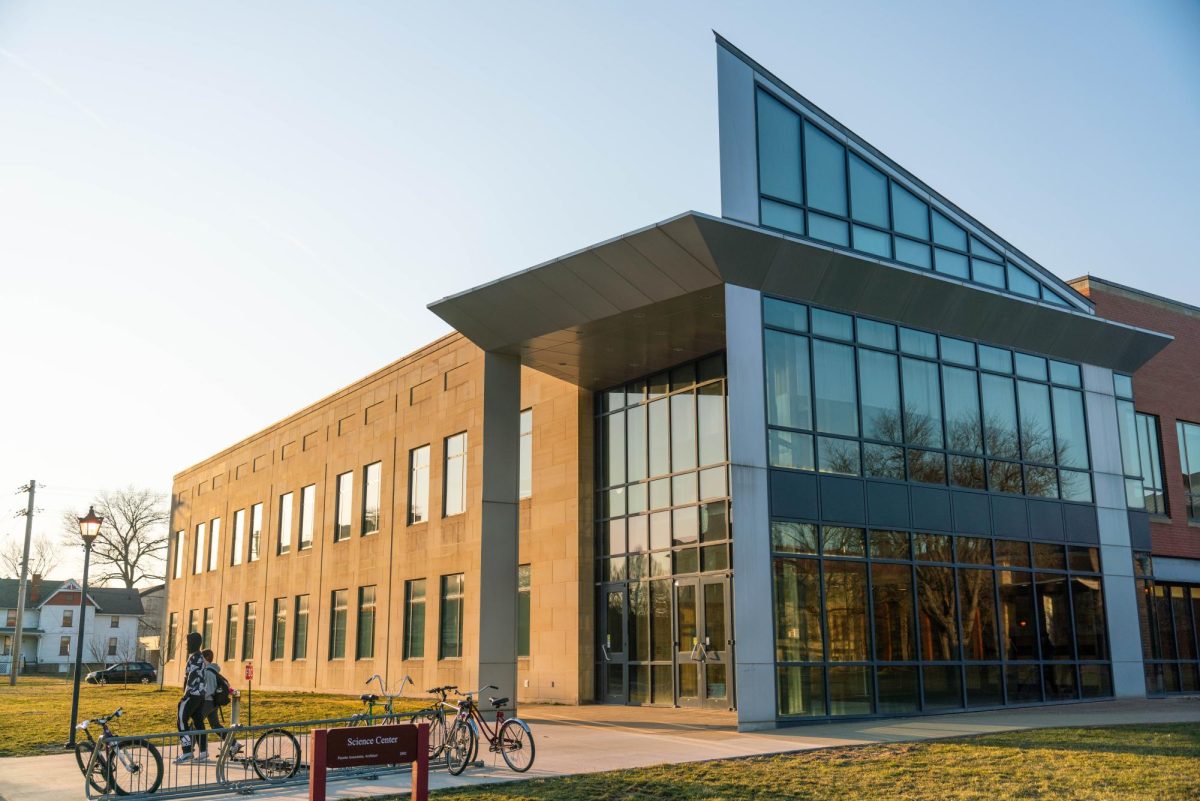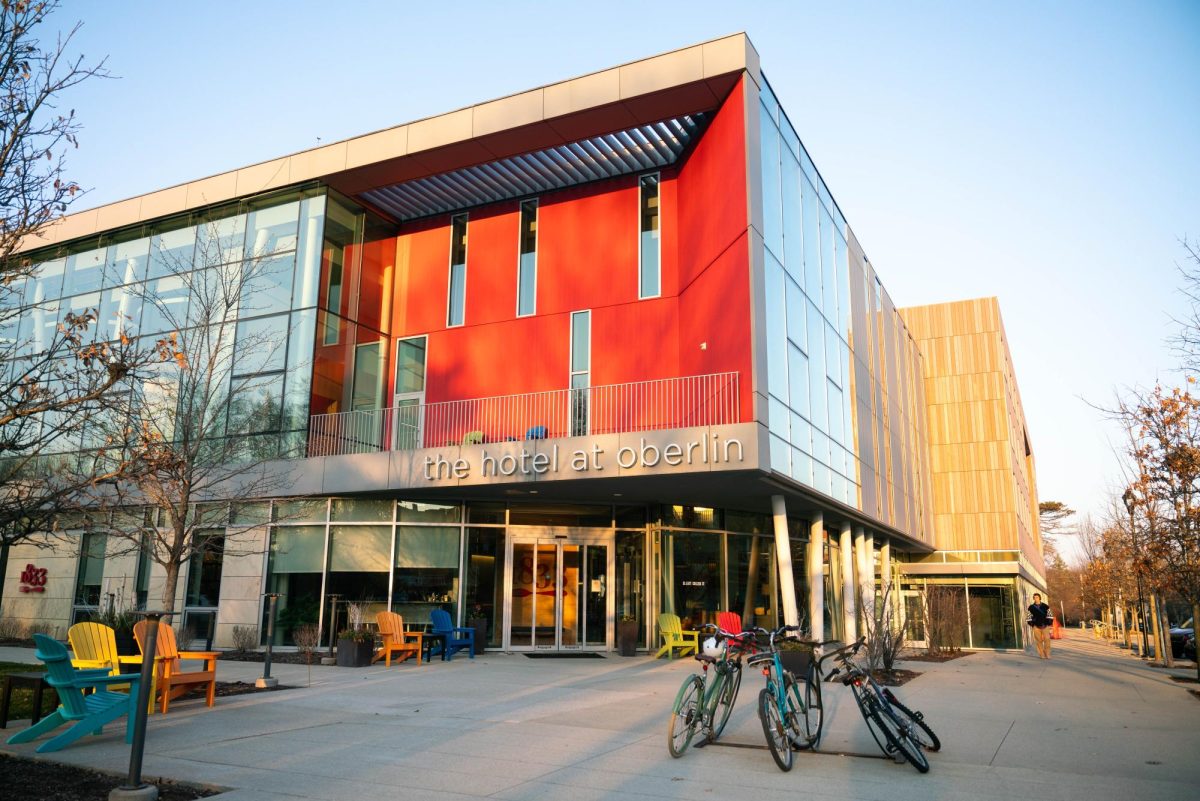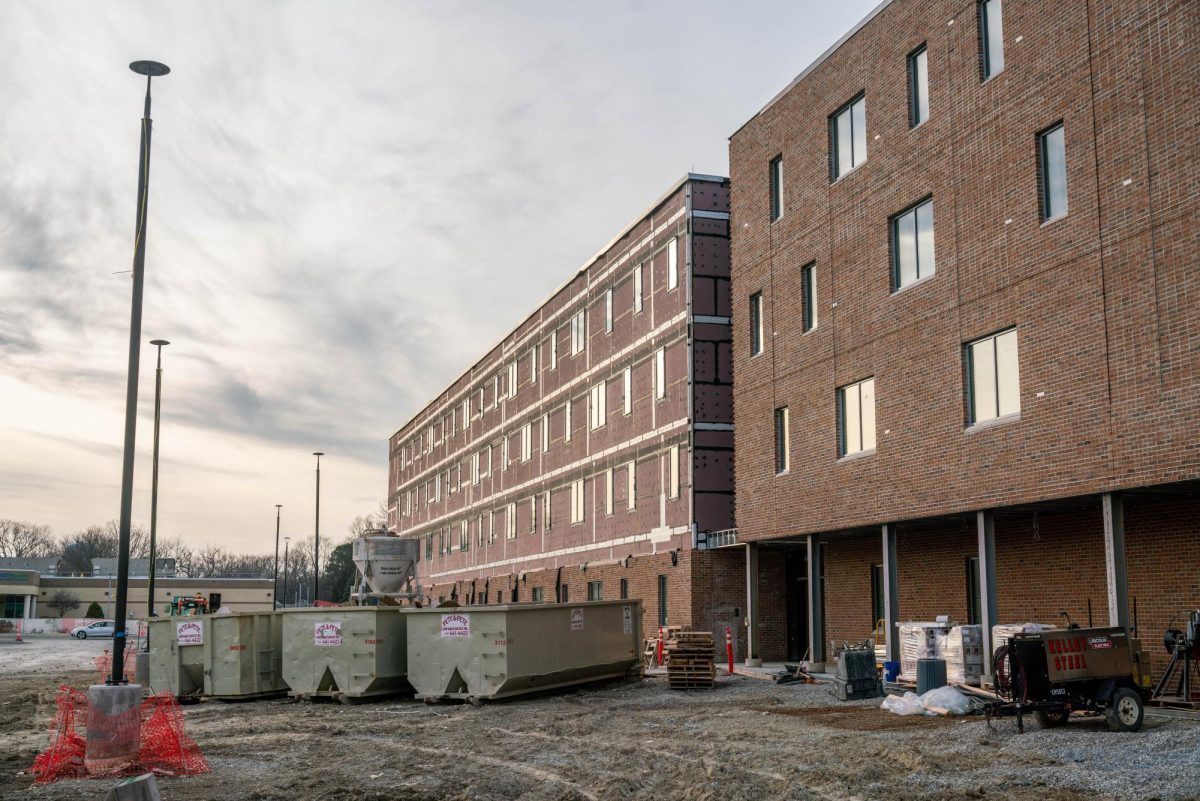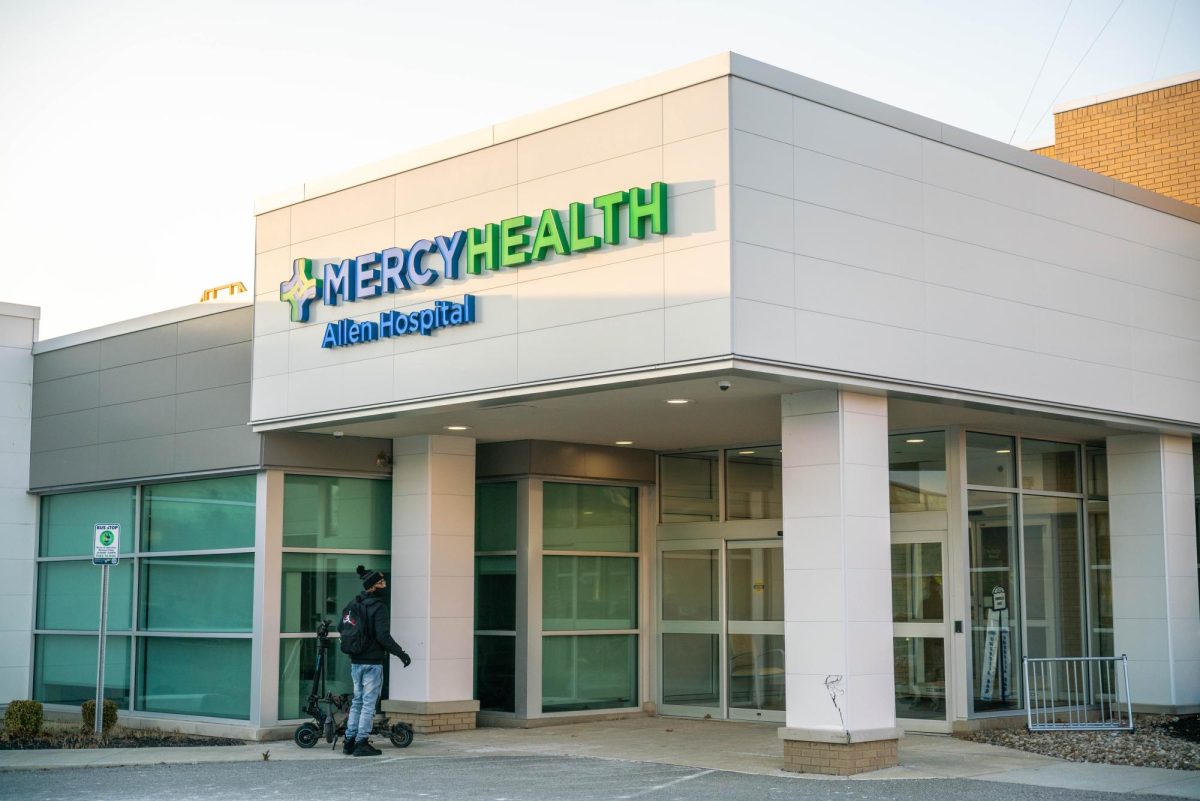Nearly a quarter century after its construction, “the most important green building of the last thirty years” is being reimagined. Throughout January, almost 100 Oberlin alumni, current students, design professionals, and members of the original design team collaborated in nine intensive, hour-long brainstorm sessions to create guiding principles for a renovation of the Adam Joseph Lewis Center for Environmental Studies. Participants shared the impact of the AJLC on their education and careers and shared what they hoped the center could do for future generations.
“The idea was to try to figure out what the building had meant to people, what kind of impact it had on people who have experienced it over the years, and the general goals that we would like to drive it forward,” College fourth-year Nicholas Coughlan said.
Finished in 2000, the AJLC’s initial design process kicked off in 1992, when David Orr, Paul Sears distinguished professor of Environmental Studies and Politics emeritus, asked students to design a building that would serve the growing needs of the Environmental Studies department. The final center had the largest solar array in Ohio at the time, features a living machine that uses plants, soil, and bugs to filter wastewater into reusable greywater, and is 100 percent lit by natural sunlight during business hours.
Today, many of the systems that were cutting-edge in 2000 are now obsolete or have reached the end of their lifecycle.
“When you’re an early adopter, you’re always dealing with technology that is rapidly evolving and is likely to become obsolete,” Paul Sears Distinguished Professor of Environmental Studies and Biology and Director of Environmental Studies and Sciences Program John Petersen, OC ’88, said. “When we did the big parking lot array, the inverter, the device that converts the DC power to AC power so it can go onto the grid, had a serial number of number two or three stamped on it, because that’s how far the technology was along. It was impossible to repair later because it was a one-off.”
While some items could be repaired, entirely new systems may be designed or updated technology may be added. Along with applying technical advancements, Petersen sees an opportunity to expand the center’s ability to educate students and the public. While many people contributed to the creation of the AJLC, Orr led the charge with his vision of “architecture as pedagogy.” Petersen sees that vision as a reason to update the center.
“When I first started talking about problems with the building, the need to renovate certain aspects of the AJLC, what I got back from facilities was, ‘Well, there’s so many buildings on campus that have bigger problems than the AJLC,’” Petersen said. “They’re not seeing the AJLC as something that is completely different from other buildings. Something that is an integrated component of the curriculum. … It itself is educational. You can’t pigeonhole it as being another building, … because [The AJLC is] not that. It’s an interpretive center.”
The AJLC has also had an impact beyond Oberlin. After Orr and the students came up with a set of guiding principles, they brought their ideas to Kevin Burke, an architect at William McDonough + Partners. They were tapping into a fledgling field of scientists and architects interested in making buildings that were “more good,” not just “less bad,” as William McDonough and Michael Braungart wrote in their book Cradle to Cradle, published in 2002.
“The language was there, but [McDonough] was out in the world spreading the news about sustainability and it was so important to have a physical embodiment of the message,” Burke said. “[The AJLC] was really what the sustainability movement needed to go beyond just a checklist of measures that you can do to reduce impacts.”
Despite the potential for the center, the various technologies they wanted to incorporate hadn’t been applied to an educational building.
“We were venturing into some unknown territory, and we had to convince a number of people that this was viable,” Burke said.
The architects were proposing technology that was just being developed and hadn’t necessarily been seen in other buildings. Burke collaborated with NASA and the Amish as experts, with each group looking into regenerative fuel cells as a way to store energy and innovative materials sourcing for timberwood walls, respectively.
The idea was ambitious, and Orr was tasked with sourcing funding — with the stipulation that he could not reach out to previous Oberlin donors or those who might donate in the upcoming years. But he was successful in raising the money, and they brought the design to the administration.
“We were early on being very, very ambitious in kind of pioneering and almost ‘blue sky, anything goes’ on the project,” Burke said.. “But our challenge was getting approvals for that early design, and it was a way of almost testing Oberlin’s risk tolerance,” Burke said.
Over the 25 years since the center was initially created, many of the features that were experimental in the AJLC have become easier to source as more buildings were designed to be sustainable and standards developed. Over 197,000 buildings now have LEED certification, which requires builders to address energy efficiency, water conservation, site selection, material selection, daylighting, and waste reduction in their designs. Since 2000, Oberlin has expanded the campus’ carbon neutrality commitment to include every building on campus and has implemented many of the same technologies seen in the AJLC, like underground heat pumps, across the entire campus.
Petersen suggested that the center could be a site to explain the technology serving the campus. Suggestions from the workshops included exposing mechanical systems and labeling the triple-pane windows with an explanation of how they insulate the building. Petersen and Coughlan want to use this fact as an opportunity to educate the public about both the project and the AJLC’s role in making it possible.
“There’s 25 or 27 individual heat pumps that run the space that are really loud and obnoxious and I think probably somewhat inefficient at this point and they’re breaking,” Coughlan said. “Now the entire campus is being run by three massive heat pumps, and I just think that that story is really amazing — in 25 years, how vastly the scale and the affordability and the availability and the acceptability of that technology has come. And by nature of that, what’s in the building now is obsolete. It was great when it was put in, but now it’s old and we have such better options. … You look at it and say, ‘Okay, everything’s broken and everything sucks.’ Or you could say, ‘We’ve made so much progress in 25 years.’”


